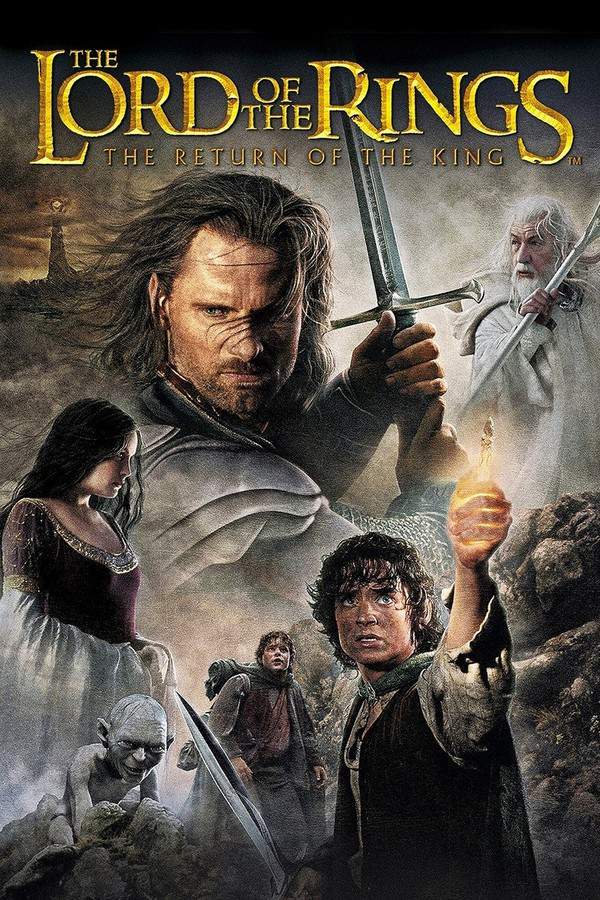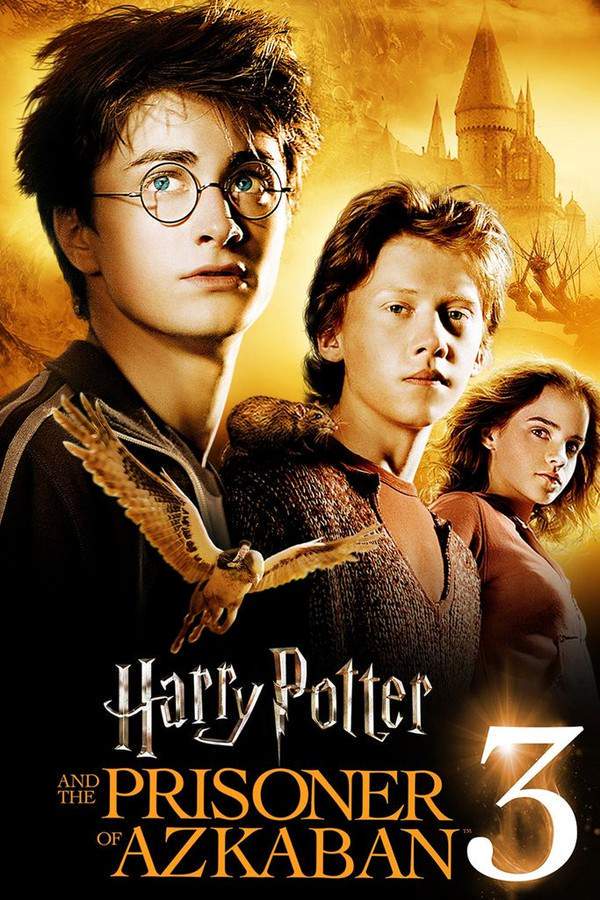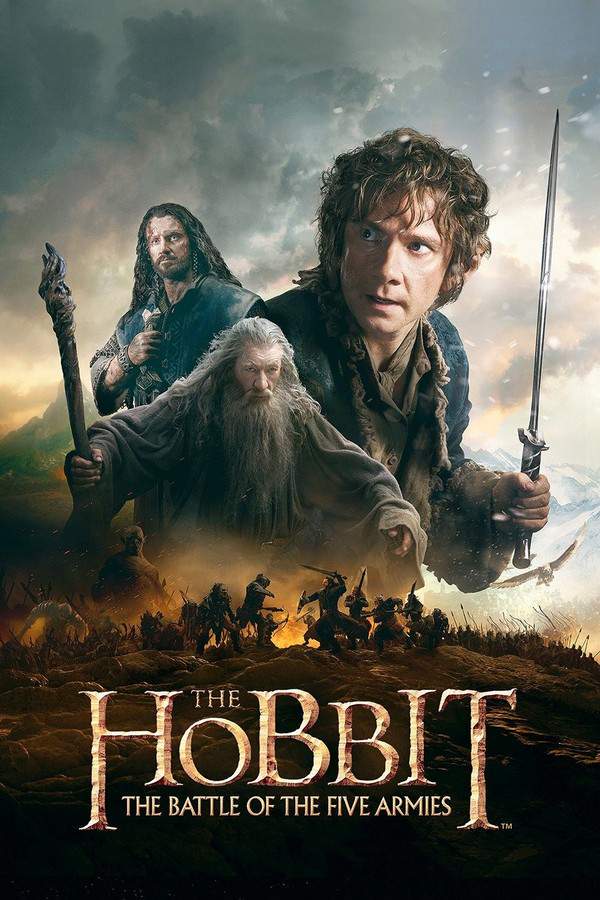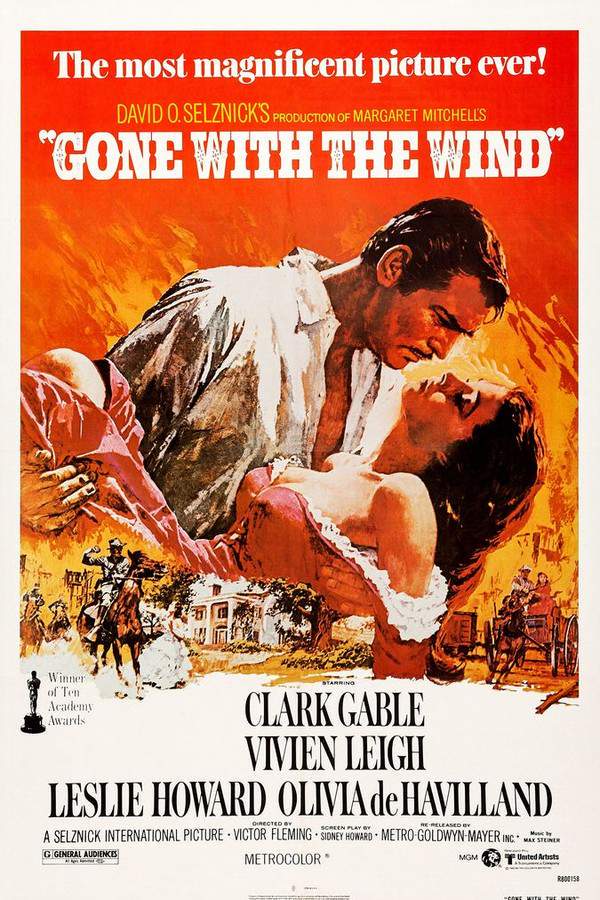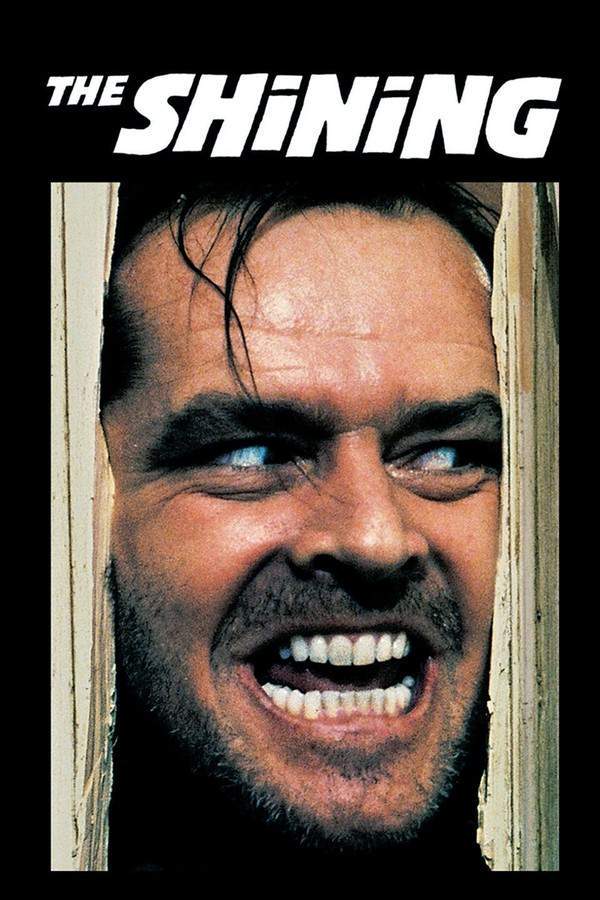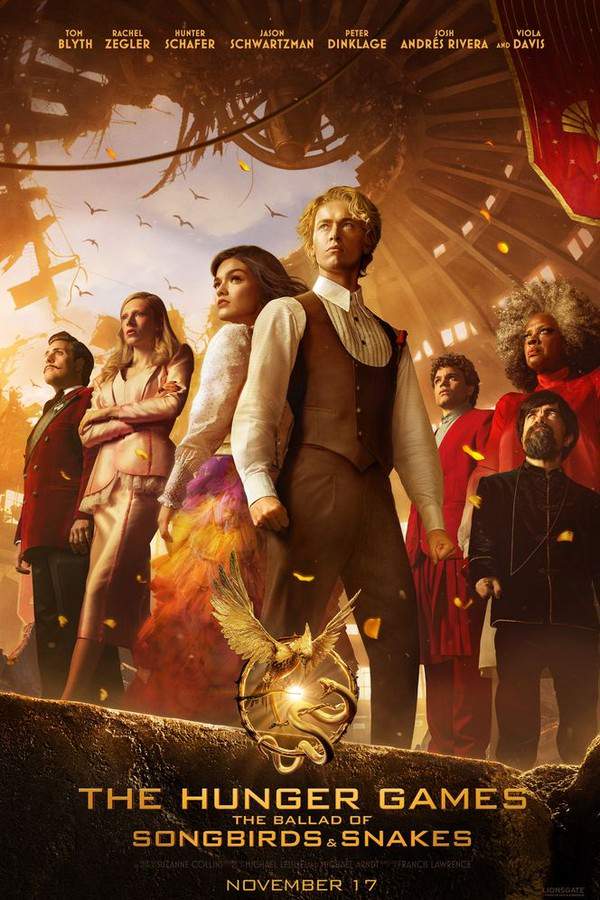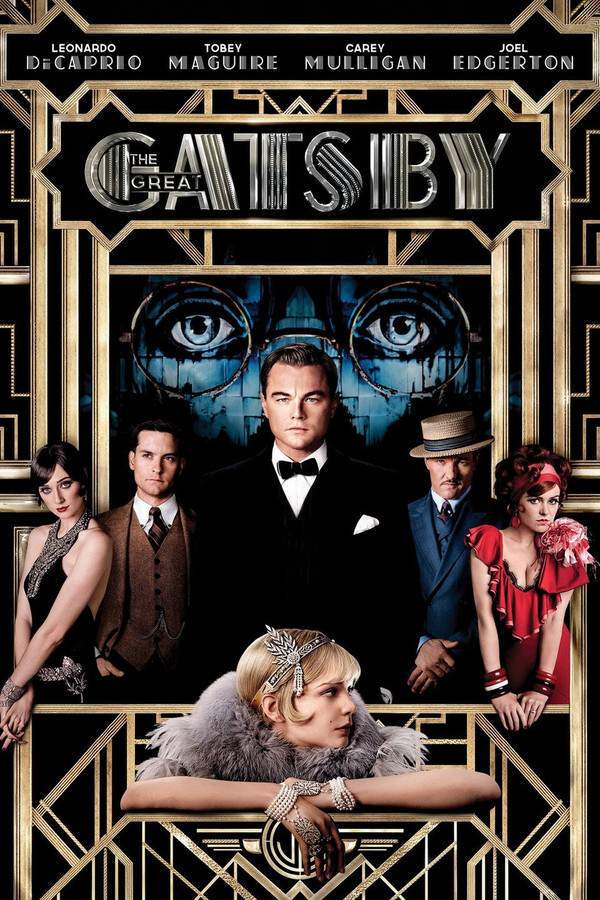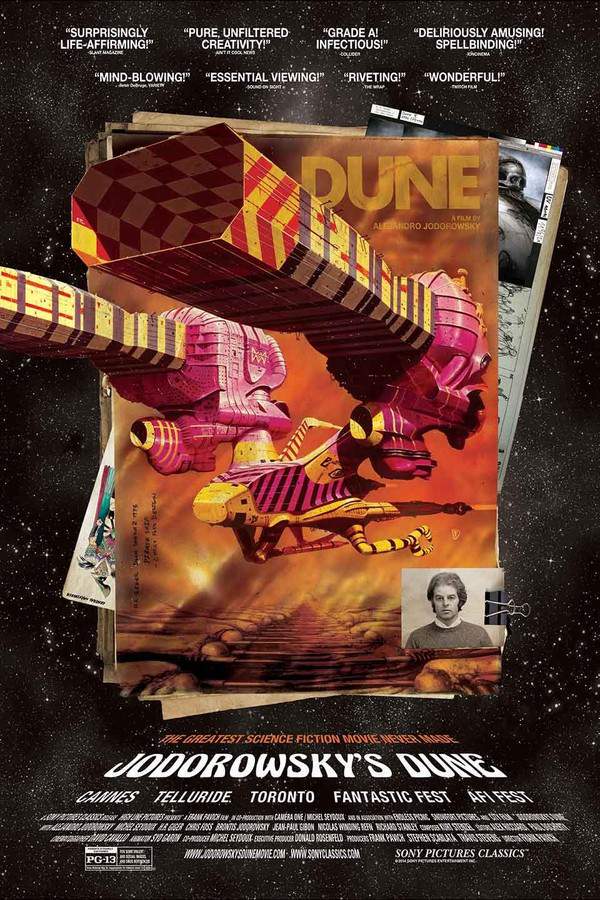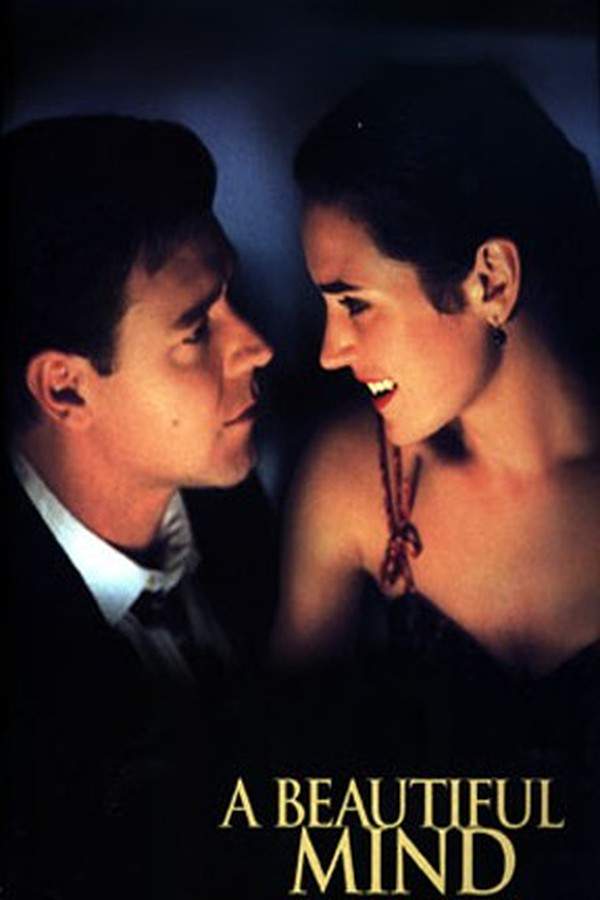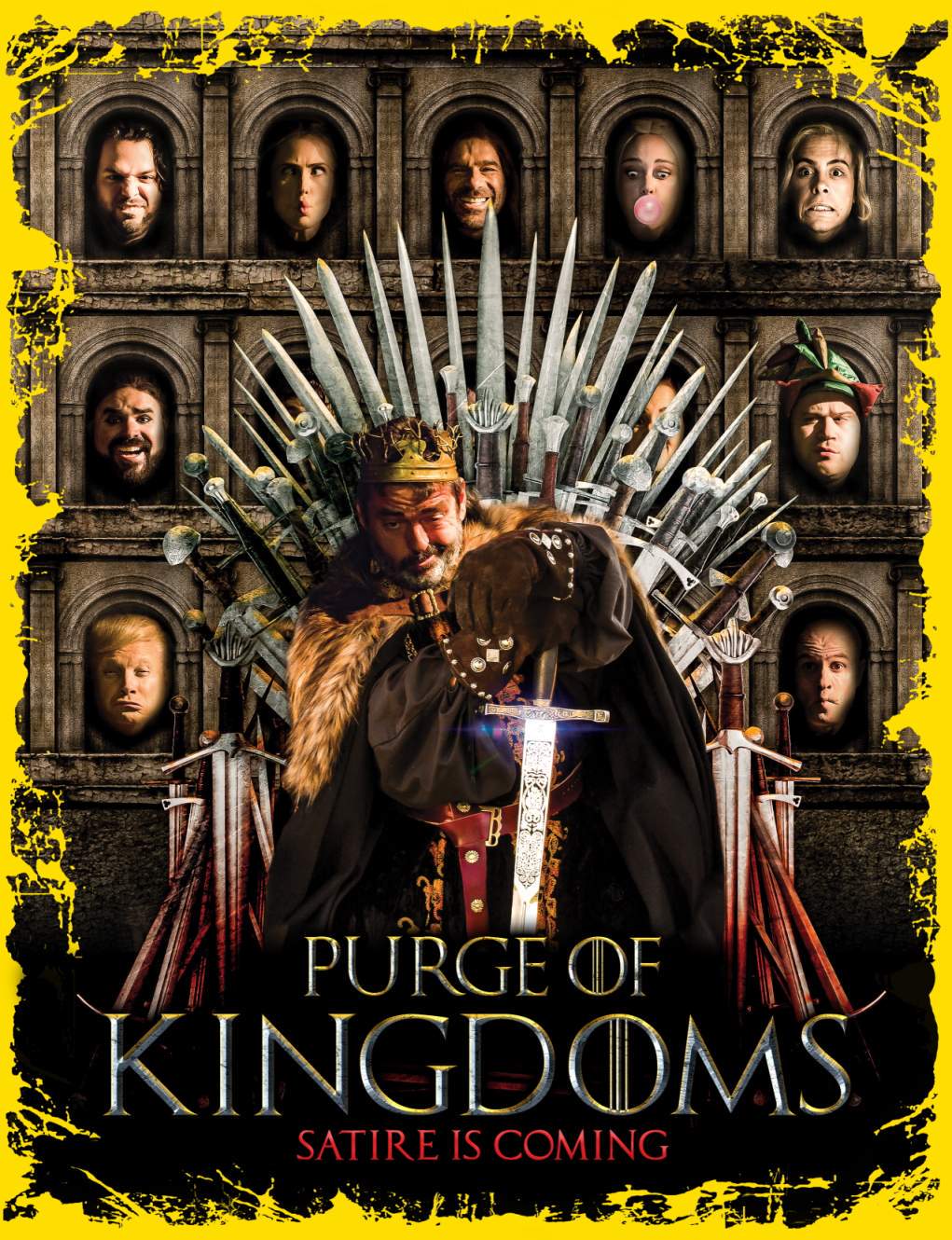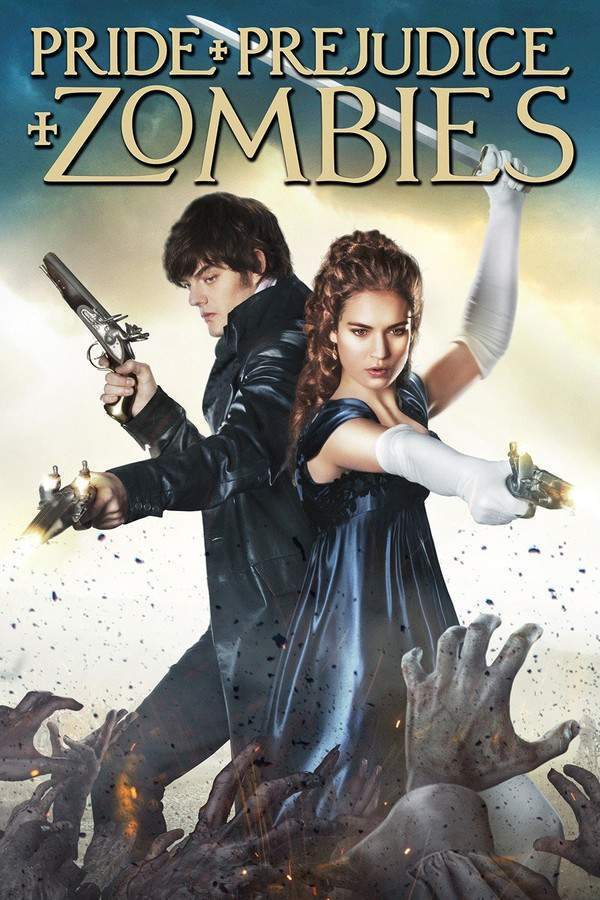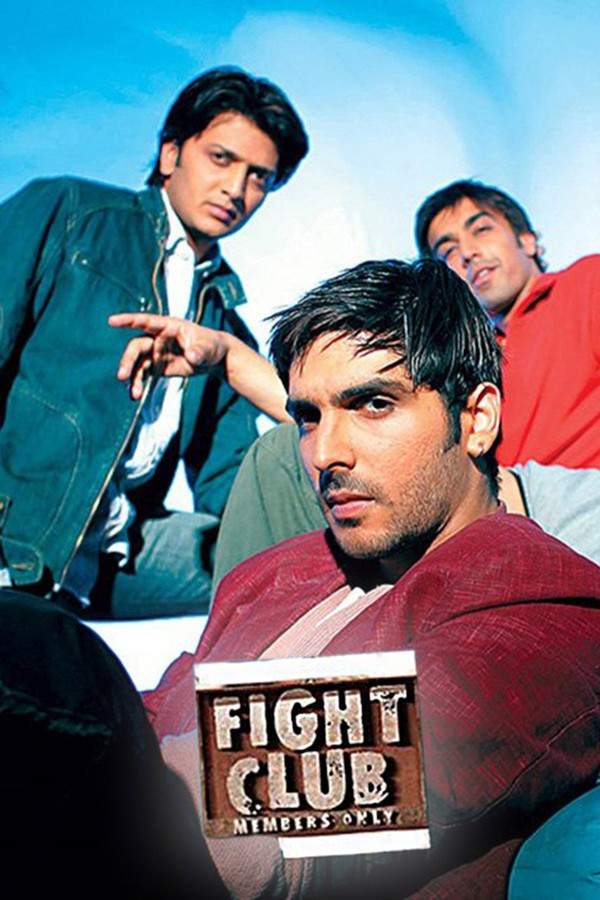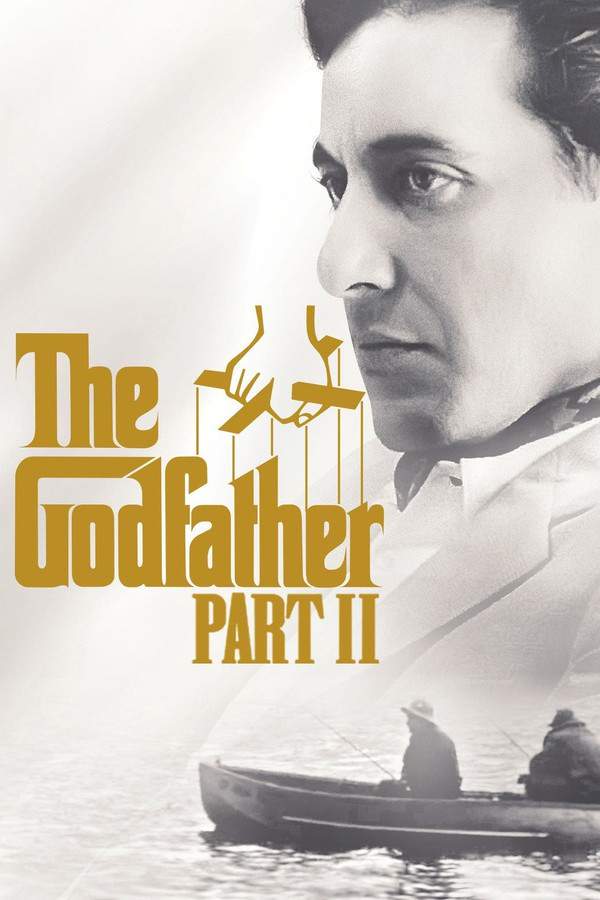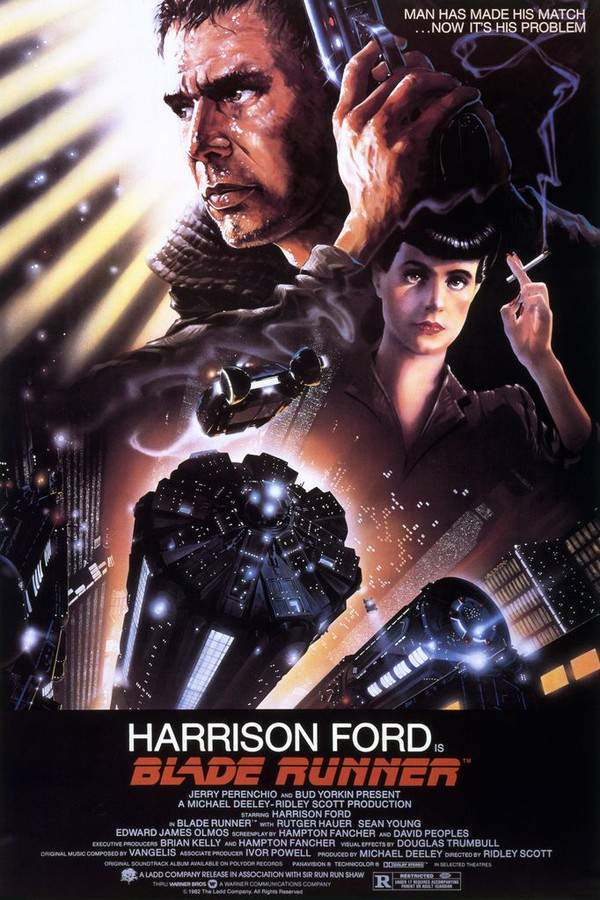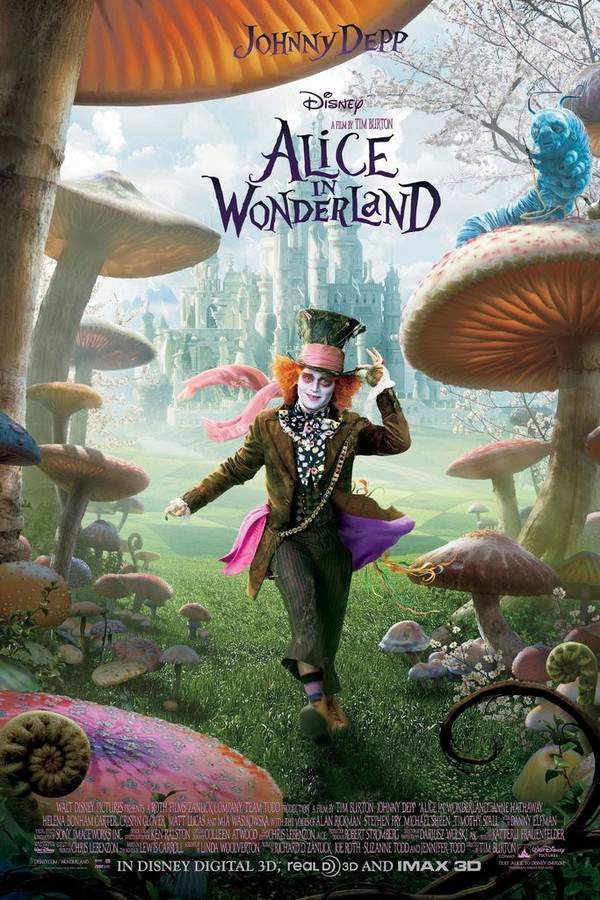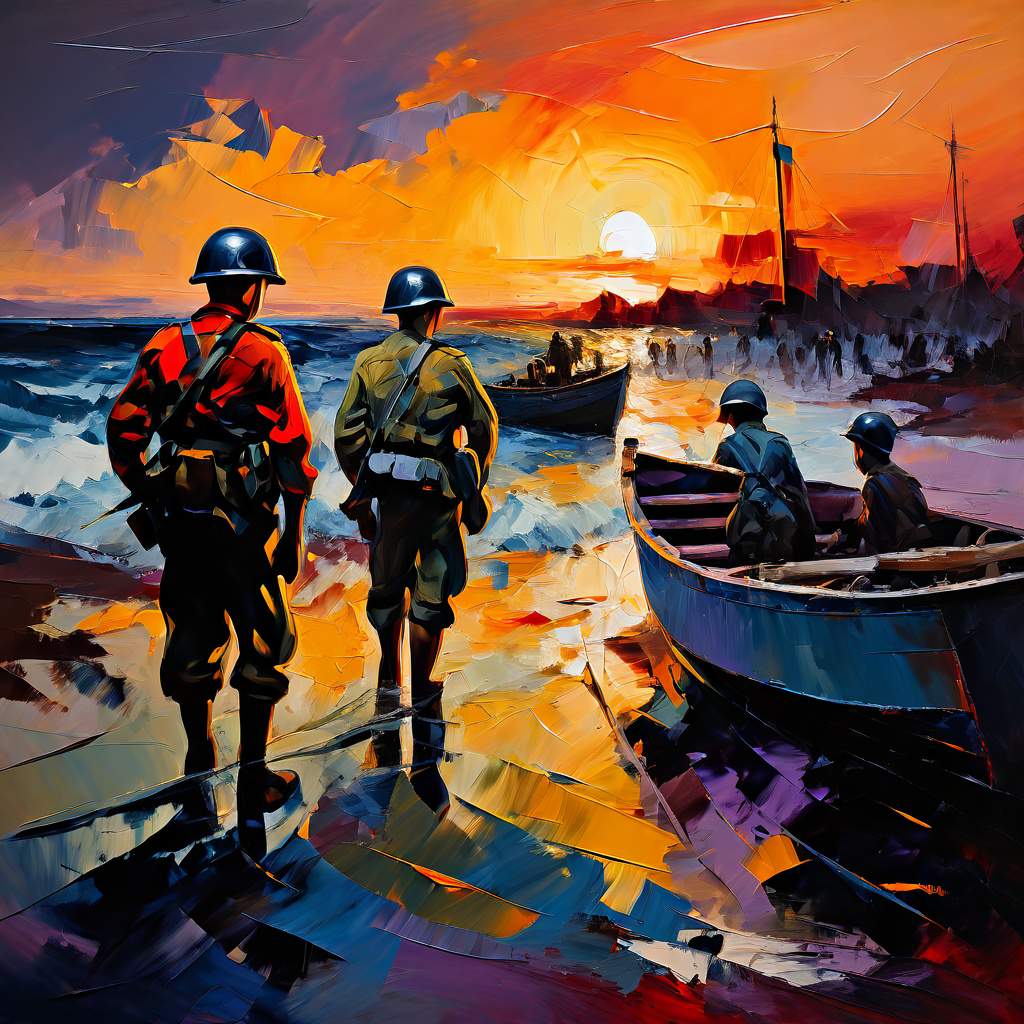What's After the Blog?
Culture
Adapting Literature for the Screen: Challenges and Triumphs
Explore the intricate process of adapting literature for film, highlighting the challenges and triumphs filmmakers face in bringing beloved books to the screen.
February 12, 2024

Movies mentioned in this article
Adapting Literature for the Screen: Challenges and Triumphs
Introduction
Adapting literature for the screen is an art form that intertwines the literary world with the cinematic universe, often resulting in remarkable storytelling that captivates audiences across different mediums. This process, however, is fraught with challenges as it involves translating the depth and breadth of written words into a visual format that stays true to the original while also being cinematically compelling. From the intricate worlds of fantasy novels to the subtle nuances of character-driven dramas, screen adaptations require a delicate balance between loyalty to the source material and the creative liberties needed for cinematic success.
In the world of film adaptations, there are numerous examples where filmmakers have successfully bridged this gap. The adaptation of J.R.R. Tolkien’s The Lord of the Rings (The Lord of the Rings) is a prime example, where director Peter Jackson not only captured the essence of Middle Earth but also brought to life its rich array of characters and complex storylines. Similarly, the adaptation of To Kill a Mockingbird (To Kill a Mockingbird) remained faithful to Harper Lee’s novel, translating its powerful themes of racial injustice and moral growth into a poignant and memorable film.
However, not all adaptations are straightforward. Books often delve deep into characters’ thoughts and provide extensive background information, elements that do not always translate easily onto the screen. This is where the skill of the director, screenwriter, and the entire filmmaking team is tested, as they distill the essence of the book into a two-hour cinematic experience.
The Art of Adaptation: Staying True to the Source
One of the primary challenges in adapting literature for film is staying true to the source material. Fans of the original work have expectations regarding how their beloved stories and characters should be portrayed, and deviating too much from the book can lead to disappointment. However, adhering too rigidly to the text can also hamper the creative freedom necessary for a successful film adaptation.
Harry Potter (Harry Potter) is a notable example where the films managed to stay largely true to J.K. Rowling’s books while making necessary adjustments for cinematic storytelling. The films captured the magical world of Hogwarts and its inhabitants, creating a visual spectacle that resonated with both book lovers and new audiences. On the other hand, The Hobbit (The Hobbit) received mixed reviews for its deviation from the simpler narrative of Tolkien’s book, showing how stretching a short novel into an extensive film trilogy can be contentious.
Balancing the expectations of the literary audience with the demands of film audiences is a tightrope walk. In cases like Gone with the Wind (Gone with the Wind), the film adaptation succeeded in capturing the spirit of Margaret Mitchell’s novel, despite necessary cuts and changes. The film’s ability to convey the essence of the Civil War era and its impact on its characters showed how adaptations could respect the source while delivering a compelling cinematic narrative.
In each of these examples, the filmmakers had to make tough decisions about what to include, modify, or omit. This process is not just about fitting a story into a shorter format but about reimagining it in a new medium, with its unique language and storytelling techniques. The successful adaptations are those that strike the right balance, capturing the heart of the book while flourishing in their cinematic form.
Creative Liberties: When and Why They Are Necessary
Taking creative liberties in the adaptation process is often essential to translate a literary work into a film successfully. While purists may prefer a faithful rendition of the source material, certain elements of a book might not translate well to the screen. This necessitates changes, which can range from altering dialogues to modifying plot points, or even reimagining characters to better fit the cinematic narrative. For instance, in The Shining (The Shining), Stanley Kubrick made significant changes to Stephen King’s novel, much to the author’s dismay. However, these changes created a film that stands out for its atmospheric tension and psychological horror, different from but still respectful to the source material.
In other instances, adaptations need to condense lengthy narratives to fit the film’s runtime. The Hunger Games (The Hunger Games) series, for example, had to trim down subplots and characters to maintain a focused narrative. Such decisions are crucial in ensuring the film’s pacing and engagement, balancing the depth of the story with the constraints of the cinematic form.
Moreover, adaptations sometimes update the setting or context to make the story more relevant to contemporary audiences. Baz Luhrmann’s The Great Gatsby (The Great Gatsby) is a notable example, where the classic tale is presented with a modern aesthetic, making it resonate with a 21st-century audience while retaining the core themes of F. Scott Fitzgerald’s novel.
These creative liberties, when executed well, do not just create a film that is a mere shadow of the book but rather a complementary or even a standalone piece of art. They showcase the filmmakers’ interpretation and vision, adding a new dimension to the original literary work.
The Challenge of Visualizing the Written Word
One of the most significant challenges in adapting literature for the screen is the visualization of the written word. Books allow readers to imagine characters, settings, and events in their minds, often leading to a deeply personal experience. Translating this to a visual medium requires not only creativity but also a deep understanding of the source material and its themes.
A prime example of this challenge is the adaptation of Dune (Dune), Frank Herbert’s sprawling sci-fi epic. The novel’s complex world, rich in political intrigue, religious symbolism, and ecological themes, presented a formidable task for filmmakers. The 2021 adaptation by Denis Villeneuve was praised for its visual representation of the desert planet Arrakis and its faithful depiction of the novel’s intricate plot and characters, showcasing the potential of film to bring complex literary worlds to life.
In some cases, filmmakers must convey internal monologues or abstract concepts visually. A Beautiful Mind (A Beautiful Mind), adapted from Sylvia Nasar’s biography of John Nash, uses visual cues and narrative techniques to depict Nash’s mental struggles and mathematical genius, something that is extensively explored through prose in the book.
Moreover, the adaptation of Life of Pi (Life of Pi) faced the challenge of visualizing the novel’s metaphysical and philosophical themes. The film’s stunning visual effects not only brought the story’s magical realism to life but also captured its introspective and spiritual depth, illustrating how cinematic tools can effectively translate complex literary ideas.
These examples underscore the creative and technical ingenuity required in film adaptations. The process involves not just a literal translation of text to screen but a reimagining of the story in a way that captures its essence while offering a new visual and emotional experience to the audience.
How Do Filmmakers Decide What to Keep or Cut from a Book?
When adapting a book into a film, one of the most critical decisions filmmakers face is determining what elements to keep, alter, or omit. This decision-making process is crucial as it influences how well the adaptation resonates with both fans of the book and new audiences. In adapting a novel like Harry Potter (Harry Potter), where each book is rich with detail and subplots, the filmmakers focused on the main narrative arc while trimming secondary storylines. This approach maintained the essence and pacing of the story, making it suitable for a cinematic experience.
The adaptation of The Lord of the Rings (The Lord of the Rings) saw the omission and alteration of certain characters and scenes to streamline the story and enhance its cinematic appeal. While some purists may disagree with these changes, they were necessary to create a coherent and engaging film trilogy. On the contrary, Game of Thrones (Game of Thrones), although a television series, is an example where expanding on the source material enriched the adaptation, adding depth and complexity to the world of Westeros beyond what was present in the books.
These decisions often stem from the need to balance fidelity to the source with the practicalities of filmmaking, including budget constraints, runtime limitations, and audience appeal. The success of an adaptation can hinge on these choices, highlighting the delicate art of translating literature into film.
Character Interpretation: Bringing Literary Figures to Life
Casting and character interpretation are pivotal in book-to-film adaptations. The challenge lies in capturing the essence of a character as imagined by readers and translating it into a compelling on-screen persona. This task requires a nuanced understanding of the character’s traits, development, and significance in the story. The casting of Atticus Finch in To Kill a Mockingbird (To Kill a Mockingbird) was critical to the film’s success, as Gregory Peck’s portrayal resonated deeply with the character’s integrity and moral fortitude as depicted in Harper Lee’s novel.
In adaptations like Pride and Prejudice (Pride and Prejudice), the portrayal of Elizabeth Bennet and Mr. Darcy was crucial to capturing the essence of Jane Austen’s classic. The actors’ ability to convey the characters’ complex emotions and evolving relationship was key to the film’s effectiveness in bringing the beloved novel to life.
Conversely, adaptations can also offer new interpretations of characters, providing fresh perspectives on well-known literary figures. Baz Luhrmann’s Romeo + Juliet (Romeo + Juliet) is an example where traditional characters were reimagined in a modern setting, giving audiences a new way to connect with Shakespeare’s timeless tragedy.
The success of a character’s portrayal in film adaptations can significantly influence how they are perceived and remembered, showcasing the transformative power of cinema in redefining literary characters.
The Triumph of Adaptation: When Film Enhances Literature
In some instances, film adaptations achieve the remarkable feat of enhancing the original literature, adding new dimensions to the story or characters that were not as prominent in the book. This can happen through visual storytelling, performance, or even changes to the narrative that intensify the story’s themes. A notable example is Fight Club (Fight Club), where David Fincher’s cinematic adaptation added a visceral, tangible quality to Chuck Palahniuk’s novel, bringing the story’s themes of consumerism and identity crisis to life in a way that was more palpable than the book.
Similarly, The Godfather (The Godfather), directed by Francis Ford Coppola, is often considered superior to the original novel by Mario Puzo. The film’s portrayal of the Corleone family and the intricate dynamics of power, loyalty, and morality offered a more profound and engaging experience than the book. The performances, cinematography, and score in the film contributed to creating an iconic piece of cinema that has arguably eclipsed its literary origin.
In other cases, adaptations have made literature more accessible, especially for challenging texts. Blade Runner (Blade Runner), adapted from Philip K. Dick’s Do Androids Dream of Electric Sheep?, transformed a complex and philosophical novel into a visually stunning and thematically rich film. While different from the book, the film brought the story’s core questions about humanity and reality to a broader audience.
These examples demonstrate that film adaptations have the potential not only to faithfully translate books into movies but also to elevate the source material, offering new perspectives and reaching wider audiences.
The Audience’s Role: Expectations and Reception
The audience plays a crucial role in the success of literary adaptations. Their expectations and reception can significantly impact a film’s interpretation and legacy. Audience expectations are often shaped by their relationship with the source material; a beloved classic comes with high expectations for a faithful and respectful adaptation. The Great Gatsby (The Great Gatsby) has seen several adaptations, each received differently based on how they met or defied audience expectations. Baz Luhrmann’s 2013 version, for instance, divided audiences with its modern take on the classic, illustrating how varying interpretations can lead to mixed receptions.
The anticipation for film adaptations of popular books, like the Harry Potter (Harry Potter) series, often carries immense pressure for filmmakers. These films are not just competing with audience’s imaginations but also with their emotional attachments to the characters and story. Successful adaptations in such cases are those that capture the essence of the book while also providing a memorable cinematic experience.
Moreover, the way an adaptation is received can change over time. Initial reactions might be mixed, but as the film stands the test of time, it can gain appreciation for its artistic merits or how it captured the spirit of its time. The adaptation of Pride and Prejudice (Pride and Prejudice), for instance, has seen various interpretations, with each generation finding its own version that resonates most strongly, whether it adheres closely to Jane Austen’s novel or takes creative liberties.
These examples underscore the significance of audience engagement in the adaptation process and highlight the delicate balance filmmakers must strike between honoring the source material and creating an appealing cinematic experience.
How Do Adaptations Impact the Way We See Classic Literature?
Film adaptations can significantly influence how we perceive and engage with classic literature. They often serve as a gateway for new audiences to discover literary works, potentially altering the public’s perception and understanding of these texts. For example, the film adaptation of Pride and Prejudice (Pride and Prejudice) has introduced Jane Austen’s novel to a broad audience, many of whom may not have otherwise encountered the book. The visual representation of the characters, settings, and themes can bring new life to the story, making it more relatable and accessible to contemporary viewers.
Moreover, adaptations can renew interest in the original literature, leading to a resurgence in its popularity. This was the case with The Lord of the Rings (The Lord of the Rings), where Peter Jackson’s film trilogy sparked a renewed interest in J.R.R. Tolkien’s novels. The films not only brought the books to the attention of a new generation but also offered a fresh perspective to existing fans, highlighting aspects of the story that they might not have considered before.
However, there is also the risk that the film version becomes so dominant that it overshadows the original text. This can lead to a form of cultural amnesia where the movie adaptation becomes the primary way the story is remembered, sometimes at the expense of the nuances and depth of the original literary work. A well-known instance is Alice in Wonderland (Alice in Wonderland), where the various film adaptations have heavily influenced the public’s collective memory of Lewis Carroll’s novel, possibly overshadowing the book’s original charm and eccentricity.
These dynamics illustrate the profound impact that film adaptations can have on the way classic literature is consumed, perceived, and remembered, showcasing the symbiotic relationship between literature and film.
Conclusion
In concluding our exploration of adapting literature for the screen, it’s clear that this process is both a challenging and rewarding endeavor. It involves a delicate balance of staying true to the source material while making necessary adjustments for cinematic storytelling. Successful adaptations require creative vision, respect for the original text, and an understanding of the film medium’s unique strengths. From capturing the essence of beloved characters to visually interpreting complex themes, adaptations play a crucial role in bridging the gap between the written word and the visual narrative.
As we have seen, adaptations can enhance the original literature, introduce classic works to new audiences, and even redefine how these works are perceived. Whether you are a movie enthusiast or a literature aficionado, the art of adaptation offers a fascinating lens through which to explore storytelling in all its forms.
For more insights into the fascinating world of cinema and its intersection with other art forms, be sure to check out other blog posts on What’s After the Movie (ATM). Dive into our extensive database for movie descriptions, end credit scene information, and more, enriching your cinematic experience with every visit.
Continue reading

What's After the Movie?
Not sure whether to stay after the credits? Find out!
Explore Our Movie Platform
New Movie Releases (2025)
Famous Movie Actors
Top Film Production Studios
Movie Plot Summaries & Endings
Major Movie Awards & Winners
Best Concert Films & Music Documentaries
Movie Collections and Curated Lists
© 2025 What's After the Movie. All rights reserved.

